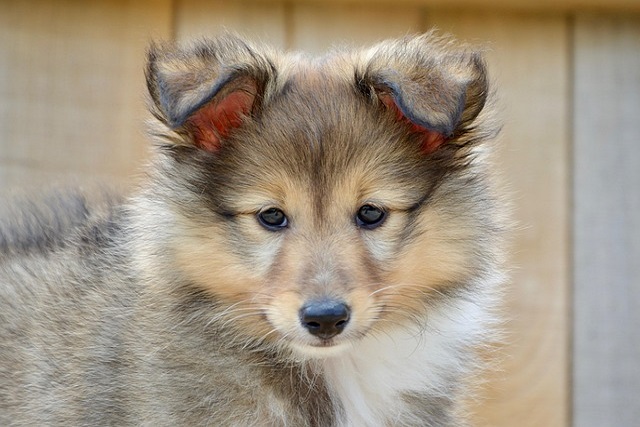
How do i train my dog to be obedient?
Watching your dog dart across the park ignoring your calls isn’t just frustrating—it can put them at risk near busy streets or public spaces.
During daily walks with dogs, the behavior of dogs pulling dog ropes often troubles their owners. When a dog rushes forward like a wild horse, pulling its leash hard, its owner often has to follow behind with difficulty. The once warm and comfortable walk suddenly becomes disheveled. So, what is the primary trick to stop a dog from pulling a leash?
To explore the primary trick to stop dogs from pulling dog ropes, it is necessary to first have a deep understanding of the reasons behind dogs pulling dog ropes. Dogs are naturally lively and active, filled with endless curiosity about the world around them. Whether it's a blooming flower on the roadside or a fluttering butterfly in the distance, they can instantly capture their attention and stimulate their desire to explore. Once a dog discovers something of interest, it instinctively pulls on the leash and tries to rush over to investigate. Especially for those breeds of hunting dogs, their innate hunting nature makes this desire to explore even stronger, and the behavior of pulling dog ropes is more frequent and forceful.
From the perspective of social needs, dogs also crave interaction and communication with their own kind or other animals. When they see other dogs during their walk, their excitement is instantly ignited, and they can't wait to run over and say hello or play. This urgent feeling will be transformed into a powerful driving force, driving them to pull the dog rope hard. Some dogs also attract their owners' attention by pulling their leash, naively believing that by pulling hard, their owners can quickly perceive their needs and take them to do what they want.
After in-depth research on dog behavior and countless practical experiences, we have found that the primary trick to stopping dogs from pulling dog ropes is to establish clear rules and boundaries, and consistently adhere to them. Dogs are animals that rely heavily on rules and order, and they need to know clearly which behaviors are allowed and which are not. When the owner can establish clear rules for the dog and strictly follow these rules in daily life, the dog can gradually understand and adapt, thus adjusting its behavior.

In practical operation, when the dog starts pulling the leash, the owner should respond promptly and decisively. One effective method is that when the dog pulls the leash, the owner immediately stops and no longer follows the dog forward. At this point, the dog will feel confused due to the sudden pause, and they will turn back to their owner, trying to figure out what happened. At this moment, the owner should remain firm and not be softened by the dog's pitiful gaze or coquettish behavior. When the dog calms down, no longer pulls the leash, and voluntarily returns to its owner, the owner should give a reward in a timely manner. Rewards can be delicious snacks, gentle touches, or enthusiastic praise. In this way, dogs understand that only when they follow their owners obediently without pulling the leash, can they receive recognition and rewards from their owners.
Consistency is crucial in the process of implementing rules. Owners cannot sometimes turn a blind eye to the behavior of dogs pulling dog ropes, and sometimes strictly stop it. This will make the dog confused and unable to truly understand the meaning of the rules. Only by consistently adhering to the established rules and handling the behavior of a dog pulling a leash in any situation, can the dog truly understand its owner's intention and completely change its behavior habits.
In addition to establishing rules, owners can also reduce their dog's pulling behavior by increasing their physical activity. Dogs tug on their leash largely because they have excess energy and need to release it in this way. When the owner can take the dog for sufficient exercise every day, such as long walks and intense play, allowing the dog to fully consume its energy, they will become quieter and gentler during walks, and no longer have as much energy to pull the leash.
Stopping a dog from pulling its leash requires patience, time, and love from the owner. By establishing clear rules and boundaries, consistently adhering to them, and combining appropriate exercise, we can help dogs break this bad habit and make every walk a warm and enjoyable time. Because dogs provide us with unconditional loyalty and companionship, we should also do our best to guide them with scientific methods, protect their health and safety, and let this precious human pet relationship continue in harmony and joy, blooming with even more brilliant colors. Let us take action to create a better world for dogs, allowing them to grow happily and spend every happy day under our care.

Watching your dog dart across the park ignoring your calls isn’t just frustrating—it can put them at risk near busy streets or public spaces.

New puppy owners often find themselves rushing to clean up accidents before they set in, and that’s where puppy pad training becomes a game-changer.

If you've noticed your dog's waistline disappearing and your veterinarian has mentioned those few extra pounds, your first instinct might be to simply reduce the amount of food in their bowl.

Training a dog to use a designated spot indoors isn’t as daunting as many new owners fear, but it does take consistency and an understanding of your pet’s needs.

That moment of dread on a walk is all too familiar for many new dog owners. You see another dog approaching down the sidewalk of your neighborhood

If the sight of another dog on your neighborhood walk makes your heart sink as your own dog erupts into a frenzy of barking and lunging, you're not alone.